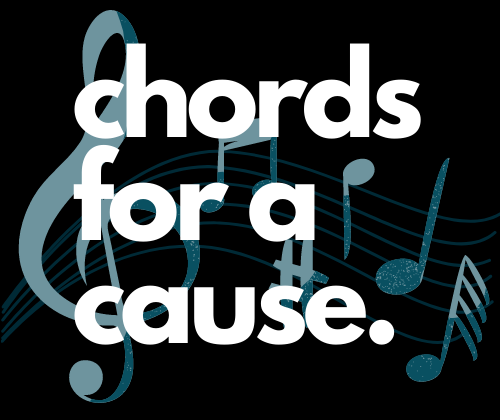The Evolution of Jazz Fusion: From the 1960s to the Present Day
Jazz fusion, often simply called fusion, is a genre that emerged in the late 1960s, combining elements of jazz with other styles of music, including rock, funk, and R&B. This genre has evolved over the decades, shaped by innovative musicians and their groundbreaking albums. Let’s dive into the fascinating history of jazz fusion, explore its key artists, and understand its enduring impact on music.
The Birth of Jazz Fusion in the Late 1960s
The late 1960s was a time of experimentation in music. Rock was becoming more complex and experimental, while jazz musicians were looking for new ways to express themselves. The intersection of these desires led to the birth of jazz fusion. One of the earliest and most influential albums in this genre is Miles Davis’s “Bitches Brew” (1970). This double album broke new ground by incorporating electric instruments and rock rhythms into a jazz context, creating a dense, psychedelic sound that was revolutionary at the time.
Davis was not alone in this endeavor. Other jazz musicians, inspired by the possibilities of fusion, began to experiment with this new style. Herbie Hancock, for instance, was another key figure in the early days of fusion. His album “Head Hunters” (1973) blended jazz with funk and rock, featuring synthesizers and electric pianos alongside traditional jazz instruments.
Key Artists and Albums of the 1970s
The 1970s saw the rise of several iconic fusion bands and musicians. Weather Report, co-founded by Joe Zawinul and Wayne Shorter, was known for its innovative use of electronic keyboards and its blending of jazz with world music influences. Their album “Heavy Weather” (1977) is a landmark in the genre, featuring the hit “Birdland,” which remains a fusion classic.
The Mahavishnu Orchestra, led by guitarist John McLaughlin, brought a more intense, rock-oriented approach to fusion. Their debut album, “The Inner Mounting Flame” (1971), showcased McLaughlin’s virtuosic guitar playing and the band’s complex, high-energy compositions. The Mahavishnu Orchestra’s music was characterized by odd time signatures, rapid tempo changes, and a fusion of Indian classical music with jazz and rock.
Another influential group was Return to Forever, founded by Chick Corea. Their album “Romantic Warrior” (1976) is considered a masterpiece of jazz fusion, blending intricate compositions with virtuosic performances. Corea’s use of synthesizers and electric pianos added a futuristic sound to the band’s music, pushing the boundaries of what jazz could be.
Fusion in the 1980s and 1990s
The 1980s saw jazz fusion branching out in new directions. Artists like Pat Metheny and The Yellowjackets brought a more melodic and accessible sound to fusion, incorporating elements of pop and smooth jazz. Metheny’s album “Offramp” (1982) won a Grammy Award and is known for its lush, atmospheric soundscapes and Metheny’s lyrical guitar playing.
In the 1990s, fusion continued to evolve, with bands like Medeski Martin & Wood and Tribal Tech pushing the genre in new directions. Medeski Martin & Wood’s blend of jazz, funk, and avant-garde elements created a unique sound that attracted a diverse audience. Their album “Shack-man” (1996) is a testament to their innovative approach to fusion.
Jazz Fusion in the 21st Century
Jazz fusion remains a vibrant and evolving genre in the 21st century. Contemporary artists like Snarky Puppy and Hiromi Uehara have brought fresh energy and ideas to fusion. Snarky Puppy, a large ensemble led by bassist Michael League, blends jazz with funk, rock, and world music influences. Their album “We Like It Here” (2014) captures the band’s dynamic live performances and intricate compositions.
Hiromi Uehara, a virtuosic pianist, has been pushing the boundaries of jazz fusion with her explosive playing and eclectic compositions. Her album “Alive” (2014) with The Trio Project showcases her incredible technique and ability to blend classical, rock, and jazz elements seamlessly.
The Impact of Jazz Fusion
Jazz fusion has had a profound impact on the broader world of music. By breaking down the barriers between genres, fusion has paved the way for greater experimentation and cross-pollination in music. Many contemporary musicians, from rock guitarists to electronic producers, have drawn inspiration from the fusion pioneers of the 1970s and beyond.
Fusion has also helped to broaden the audience for jazz, attracting listeners who might not have been interested in traditional jazz. The genre’s incorporation of electric instruments and rock rhythms made it more accessible to rock and pop fans, while its complex compositions and improvisational elements retained the essence of jazz.
Moreover, fusion’s influence can be heard in various genres today, from progressive rock and metal to electronic music and hip-hop. Artists like Flying Lotus and Thundercat continue to blur the lines between jazz, electronic, and hip-hop, demonstrating the enduring legacy of jazz fusion.
Conclusion
The evolution of jazz fusion is a testament to the power of musical innovation and the desire to push boundaries. From its origins in the late 1960s to its continued evolution in the present day, fusion has brought together diverse musical influences to create something entirely new and exciting. As we look to the future, it is clear that jazz fusion will continue to inspire and influence musicians across genres, keeping the spirit of experimentation alive.
Sources:
- https://fastercapital.com/topics/the-evolution-of-jazz-fusion.html#:~:text=Jazz%20fusion%20emerged%20in%20the,R%26B%2C%20and%20even%20electronic%20music.
- https://www.masterclass.com/articles/jazz-fusion-guide
- https://sylviabrooks.net/jazz-fusion-complete-guide/
- https://timeline.carnegiehall.org/genres/jazz-fusion
- https://www.jazzhistorytree.com/jazz-fusion/

